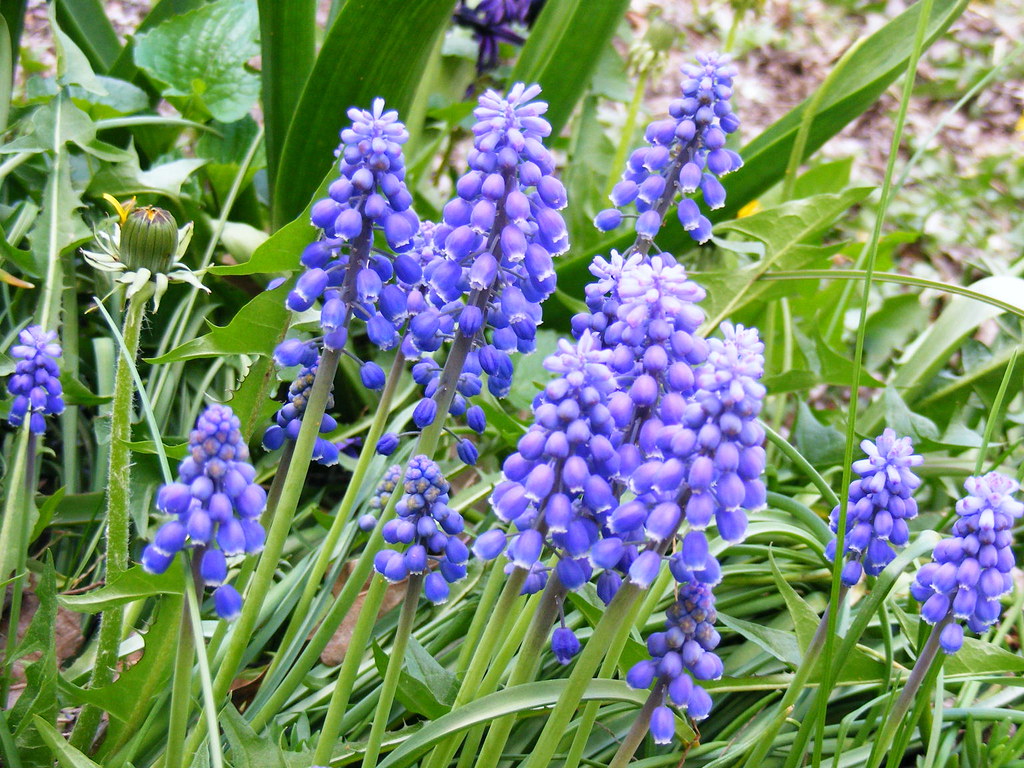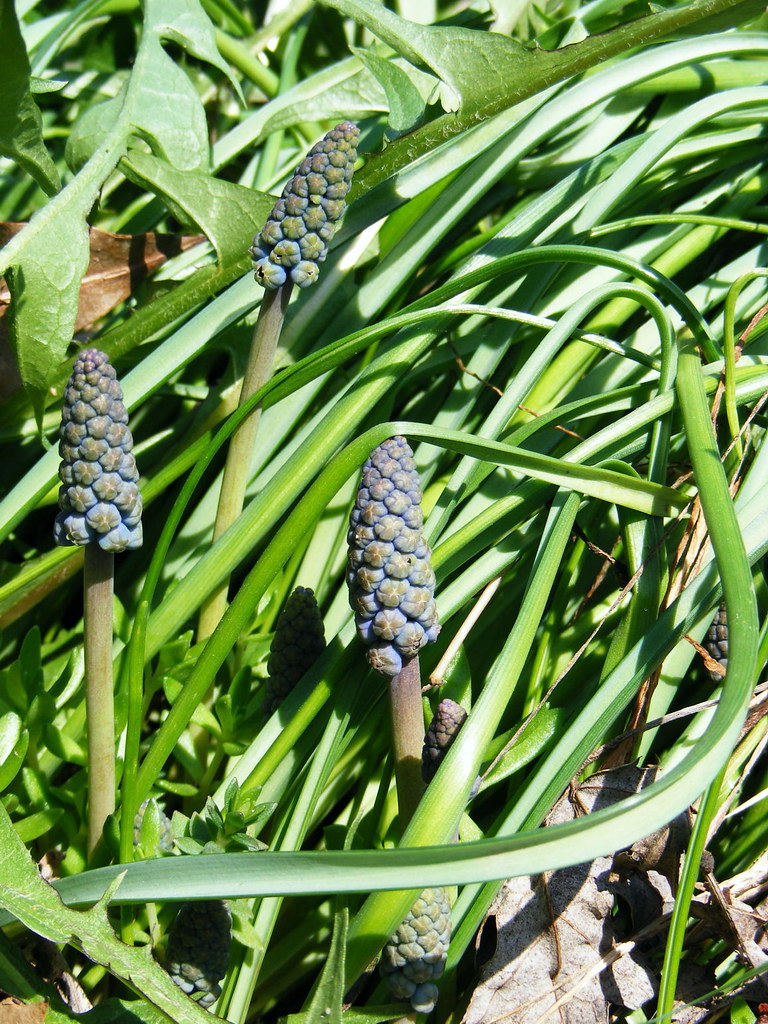
 Here's another early spring favorite in many gardens, the common "Grape Hyacinth" (Muscari armeniacum). They look (and grow) great in many different areas of the garden, but really excel when planted in a mass as a companion bulb to more fire colored Tulips ... in fact, until this year we had a couple such plantings, but as the tulips went, so did many of the Muscari with them, so even though we still have a lot of them around and naturalizing, they're not as numerous as they once were.
Here's another early spring favorite in many gardens, the common "Grape Hyacinth" (Muscari armeniacum). They look (and grow) great in many different areas of the garden, but really excel when planted in a mass as a companion bulb to more fire colored Tulips ... in fact, until this year we had a couple such plantings, but as the tulips went, so did many of the Muscari with them, so even though we still have a lot of them around and naturalizing, they're not as numerous as they once were. 
And for naturalizing purposes in a bulb garden (or even your lawn or flower beds), they're hard to beat. They're quick about colonizing a small area for themselves in just a matter of two to three years, which for naturalizing bulbs represents a really nice feature of the Muscari. They are now sold in a wide range of colors from the standard blue/purple to white and even some newer varieties that have been bred into bicolors, though I have to say the latter aren't quite my cup of tea because they just lack the natural look of the basic species. Exceptionally hard, (from zones 4-8), once established successfully, they're pretty tenacious little guys as the first picture shows ... this particular specimen was probably one of the very first bulbs we planted originally back in 1999. When we built the boulder bed in 2003, a lot of the bulbs we had along the sidewalk were dislodged or buried completely, and this is one of two who faithfully emerge from the rocks each spring to grace the gap for the length of their bloom period. Ever since we first noticed them, we've been really pleased at how intent they are on delivering a colorful performance each spring. They're especially attractive planted in masses, as the second and third shots demonstrate ... and there's an amusing (at least for me) tale behind how they ended up planted in this particular grouping. After the first exhausting round of planting bulbs in 1999, I happened to find about six bulbs on the porch that we had forgotten to plant. Even though it was well after frost and there was a bit of snow on the ground, I figured well, if I don't plant them they'll rot over the winter, so I might as well just stick them in somewhere and see what happens ... so out I went into the snow with a trowel and dug a hole for them very near the sidewalk where they have continued to grow ever since ... They look pretty cool for an afterthought planting, don't you think?
Muscari armeniacum in various positions in and around the front boulder bed. The first two shots were taken on 5/06/08 and the third taken on 4/26/08 when they had just emerged and taking on color. Photos taken by Fernymoss, with the S700 of course ...









8 comments:
The Muscari are very attractive plants. How tall do they grow?
Hey there B2 ... they're pretty small, only about 5-6" at the most, so they don't mind being massed closely together. You can only see a few leaves in the 2nd shot, but they are planted among another variety of dwarf tulips, who top out at about 8" at maturity (e.g. blooming stage). They make great companions to the little tulips and really don't take up much space ... give you any ideas? :-)
I love these! They look like little pantaloons ... ;-)
LOL, Olivia, but yeah they do! Can't believe you don't already have some ... put them on your ever expanding list, right there w/the hibiscus! Btw, I got a new Moscheutos 'Luna Red' last weekend that looks like it's gonna be a stunner when it grows up!
Ooohhhhh ... can't wait to see ... :)
I don't like Muscari because their leaves always look so ratty after being through the winter. How do you deal with the problem?
I agree about them looking ratty, but there are enough places in the boulder bed (where some are planted) that by early summer, either annuals or perennials just hide them. The ones we have along the walk we just mow and then plant zinnias and 4 o'clocks amongst them for the summer. Seems like they die back pretty far in winter, though yeah, the do look ratty for a while until they get a growth spurt.
michael kors handbags
louboutin shoes
ugg outlet
ray ban sunglasses
ugg outlet
michael kors handbags
bears jerseys
houston texans jerseys
ugg boots
kobe 9
Post a Comment